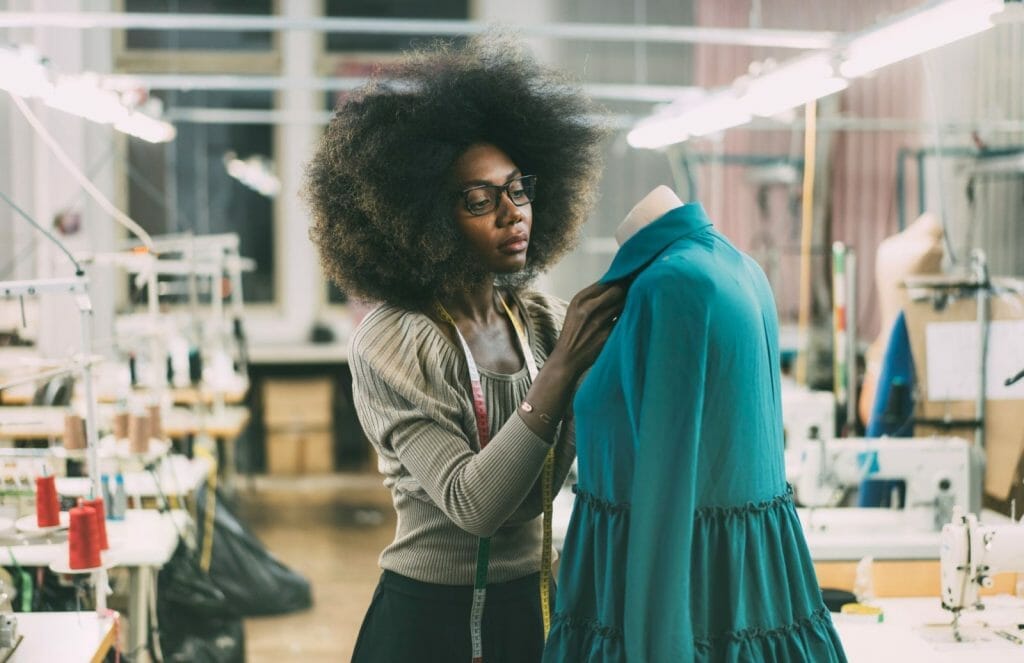What is Green Fashion?

Green fashion involves using eco-friendly materials, such as organic cotton, hemp, and bamboo, as well as recycled and upcycled materials.
Is Green Fashion Really a Thing?
Going shopping? Before you hit the mall, think about this: America generates 11.8 million tons of textile waste — 10 pounds for every person — every year. That’s four million tons of solid waste every year, or four percent of the content of our landfills, just from the clothes we throw out!
But don’t despair; there are eco-friendly solutions for an ecoista shopaholic. Think vintage, environmentally-friendly fabrics and swapping. But let’s back up a minute: Aside from not trashing your clothes and adding to the landfill, why is shopping sustainably important?
Green fashion, also known as eco-fashion or sustainable fashion, is a movement in the fashion industry that focuses on creating clothing, accessories, and footwear in an environmentally and socially responsible manner. The goal of green fashion is to reduce the fashion industry’s negative impact on the environment and society by promoting sustainable and ethical practices throughout the entire supply chain.
First, most clothing is made of cotton, one of the most heavily sprayed crops in the world, accounting for 25 percent of the world’s insecticides and 10 percent of its pesticides. To put this in perspective, toss a pound of flour in a measuring cup: It takes an astounding one-third of a pound of pesticide to make one t-shirt and two-thirds to make a pair of jeans.
Far worse are the synthetic options made from petrochemicals like nylon and polyester: Nylon manufacture creates nitrous oxide, a greenhouse gas 310 times more potent than carbon dioxide, while polyester demands large amounts of water for cooling, along with lubricants, which can become a source of contamination. And both processes are energy-hungry, leaving ecoistas to label them unsustainable on more than one count.
We need to change the way we think about buying clothes. Just say no to disposable fashion made from cheap and unsustainable fabrics, and think about creating a long-term relationship with your closet! Avoid hook-ups and one-night stands—Think about clothing purchases as things you want to live with for a long time. That doesn’t mean wearing things that are out of style. It simply means being more conscious of what we buy—and working with what we’ve got.
But every ecoista has to shop once in a while. The next time you go shopping, add a fourth question to those that we women usually ask ourselves before purchasing, i.e., “Do I like it?” “Can I afford it?” and “Does it look good on me?” (Or, the converse, “Does this make me look fat?”) Our fourth question is, “Is it sustainable?” According to a definition by the United National General Assembly in 1997, it “meets the needs of the present, without undermining future generations to meet their needs.” If you can say yes to all four, then buy away! If not, give yourself some time to think about whether you really need something—or just want it. Because you wouldn’t want to cheat on your closet, right?

Green fashion involves using eco-friendly materials, such as organic cotton, hemp, and bamboo, as well as recycled and upcycled materials. It also involves minimizing waste and reducing carbon emissions through efficient production processes, such as using renewable energy sources and implementing circular economy principles. Additionally, green fashion promotes fair labor practices and supports local communities by sourcing materials and manufacturing products locally. With that said, if you’re shopping new—and sustainable—consider that:
• Organic cotton is just as soft and durable as conventional, but it doesn’t require two-thirds of a pound of pesticide to make one pair of jeans. According to the EPA, five of the top nine pesticides used in conventional cotton production in the United States (including cyanide, propargite, and trifluralin) are known cancer-causing chemicals. That should keep you buying organic!
• Bamboo is the world’s fastest-growing plant. Bamboo fabric is sustainably grown, completely biodegradable, naturally, pest- and insect-resistant, absorbs 400 percent more greenhouse gases, and produces 35 percent more oxygen than trees (say that 10 times fast, and we’ll give you a quarter).
• Tencel fabric is organically produced from sustainably harvested wood pulp.
• Hemp is naturally insect-resistant, anti-microbial and requires no herbicides, pesticides, or chemical fertilizers to produce. Think about this: If the 1.4 billion t-shirts sold in America each year were replaced with hemp tees, the energy savings would equal 3.5 billion gigajoules, and the water savings would equal 1.3 trillion gallons—enough water for half the U.S. population for an entire year.
Where to get it? Even your cute jeans-and-top date-night outfit can get a sustainable makeover at almost any price point. You can find organic cotton at Target, and H&M’s collection was made entirely from sustainable materials like hemp and recycled PET. In addition, Nordstrom’s and Macy’s sell eco-clothing, as do Bloomingdale’s and Barney’s.
And yes, these retailers might be stocking up on sustainable designs just in time for Earth Day each year. But consider the big picture. Even if it’s just marketing: If H&M’s Spring collection sells out in a matter of days, more eco-fashion is soon to follow. And maybe, just maybe, one day their entire multi-billion dollar business will stock only organic cotton items. A girl can dream, right?
P.S. BYOB, baby! There’s a plastic bag cemetery the size of two Texases floating in the middle of the Pacific Ocean. So say no to those oh-so-pretty shopping bags (paper and plastic) and fold up a reusable bag to stash in your purse instead. (Just make sure it’s big enough for that dress and a pair of shoes.)
About the Author
Om Shopping Network dishes eco-friendly fashion, beauty, and lifestyle advice—straight to your inbox—that can help you shrink your carbon footprint from a ginormous boot into a limited planet. Sign up for free today and start spreading the eco-love!
OMTimes is the premier Spiritually Conscious Magazine. Follow Us On Facebook, Twitter, Instagram, Linkedin, Pinterest, and Youtube
Beatrice Caffe is a columnist for OMTimes and Ministry Earth Magazines, the Brand Manager and Ambassador for the OMTimes Shopping Network, OSN, and a Conscious Influencer. OSN is a Soul Service Oriented program created by OMTimes Media and Broadcasting to bring honest reviews about products and services designed to impact our society positively. Learn more about our Product reviews on our website: omshoppingnetowork.net and on our Youtube https://www.youtube.com/@omtimesshoppingnetwork






